Our Blog - Poitiers, France
Poitiers stands on a hill overlooking the Clain and Boivre rivers, a strategic location that tempted many conquerors. While not a very well known city, many notable people have come through here, from Joan of Arc to Richard the Lionhearted. Poitiers was the chief city of Eleanor of Aquitaine, who had her marriage to pious Louis VII annulled, so she could wed England’s Henry II. The Battle of Poitiers, fought on September 19, 1356 between the armies of Edward the Black Prince and King John of France, was one of the three great English victories in the Hundred Years’ War, distinguished by the use of the longbow in the skilled hands of English archers. Now, it is mostly known for being a University town (almost 25% of the population are students) and for a theme park that opened in 1987. For us, it was a middle-point on the drive home. There were a few interesting sights :-)
Église Notre Dame la Grande was built in the 11th century and consecrated in 1086, although the façade was completed around 1130. Most of the statues on the front were decapitated in 1562 by the Huguenots. It was built in the Romanesque-Byzantine style and, unlike most churches, does not have a transept. A few interesting things about this church are its pinecone-shaped towers as well as the closed-up remains of a doorway that dates from a pre-roman structure. Carvings on the doorway represent biblical scenes, for example, you can somewhat make out Adam and Even in the garden of Eden with the snake wrapping itself around the trunk of the tree.

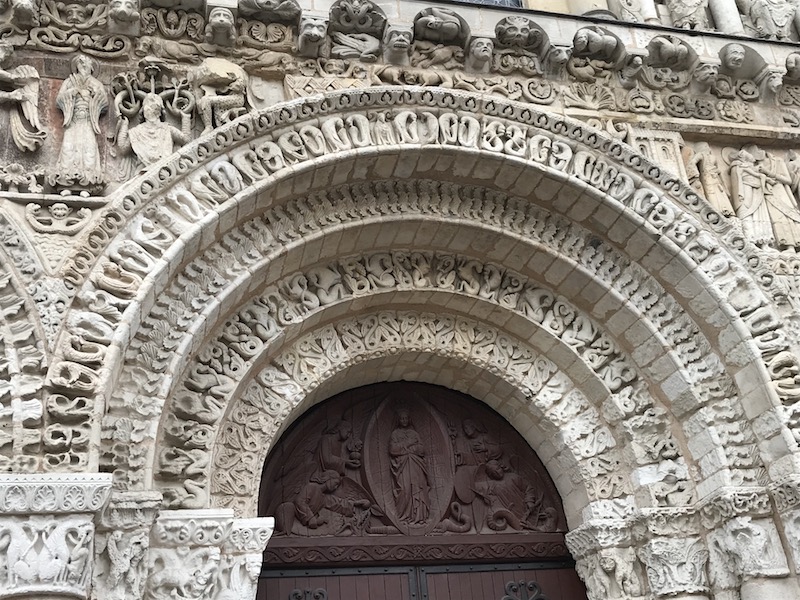
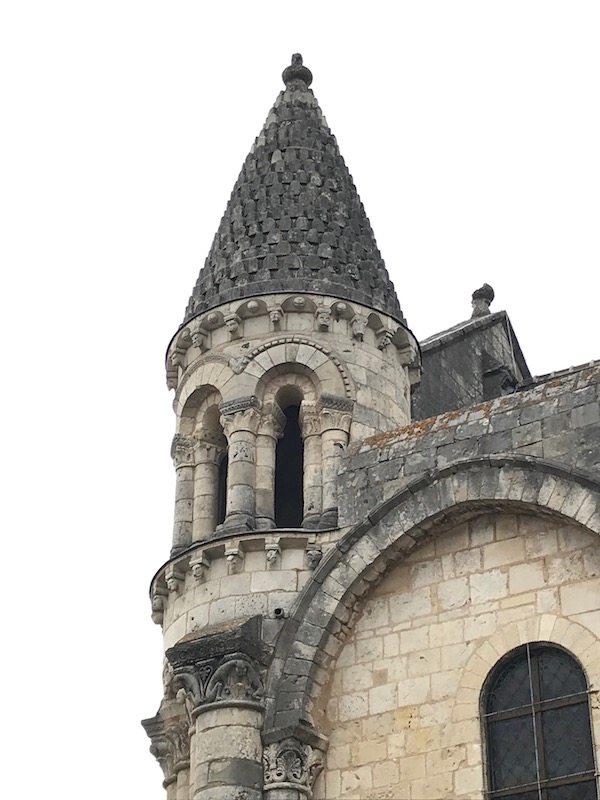

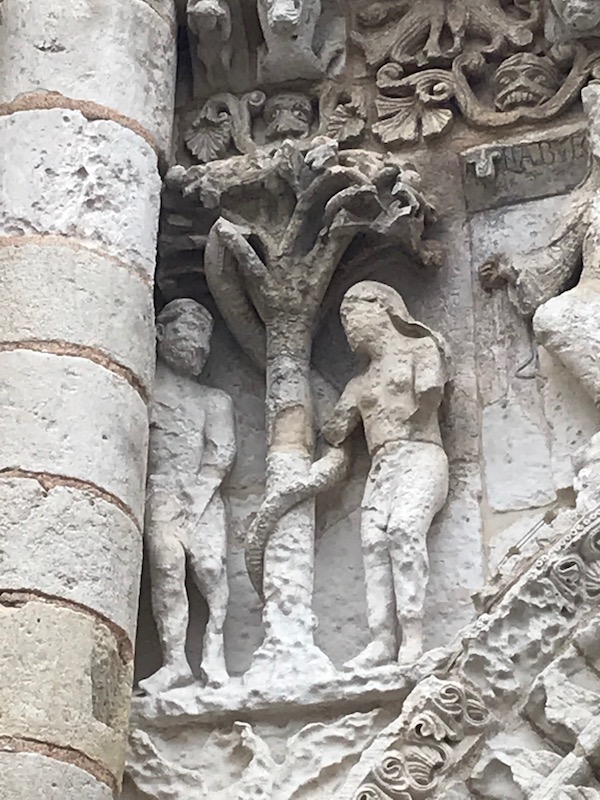
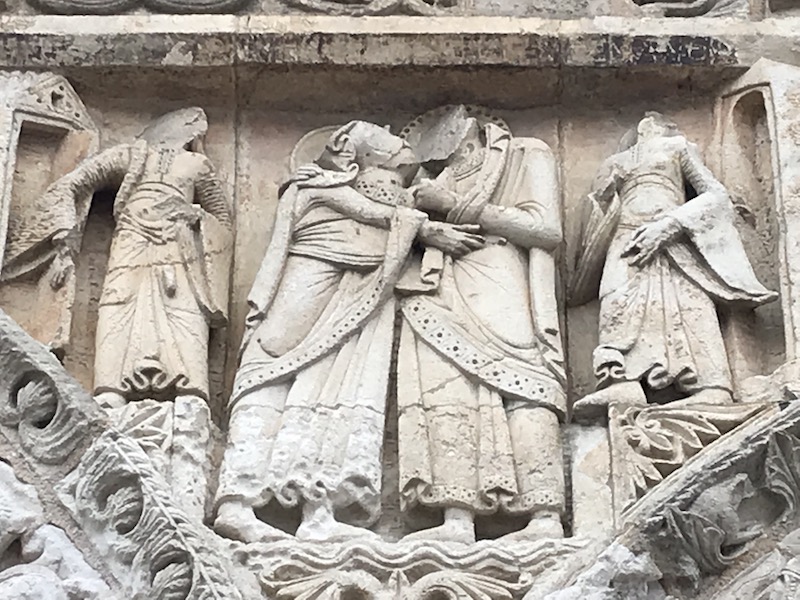
When we stepped inside, it was quite a shock. Most churches are pretty "white" inside, but almost every column is decorated here. The painted décor dates from about 1851 when all of the walls, vaults, and columns were painted based on the fashion of that time period.
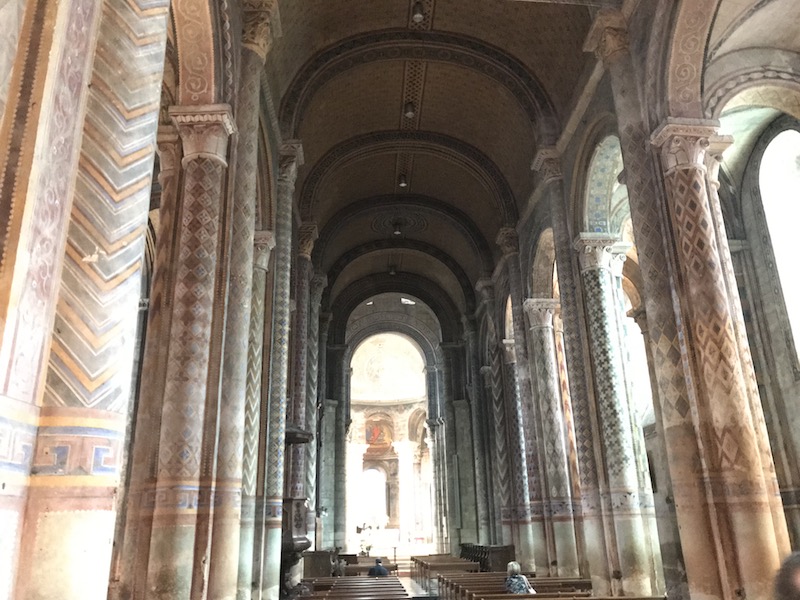
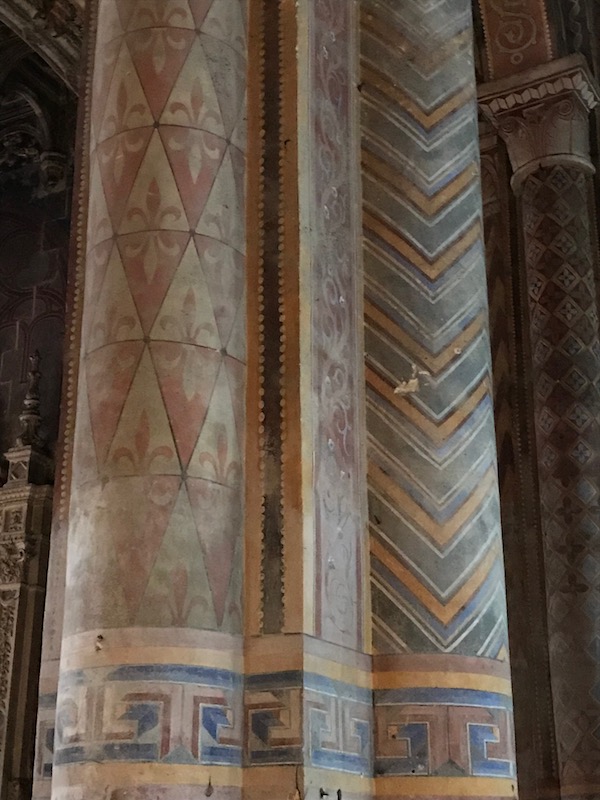
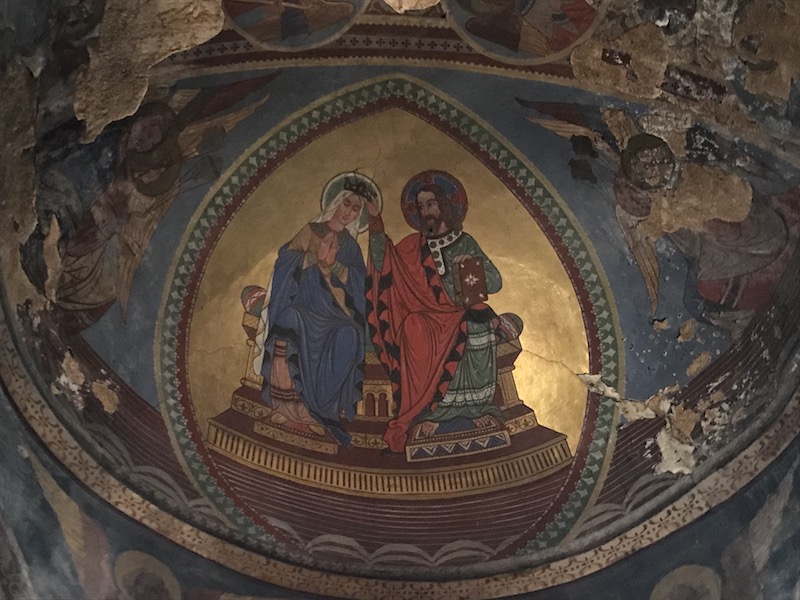
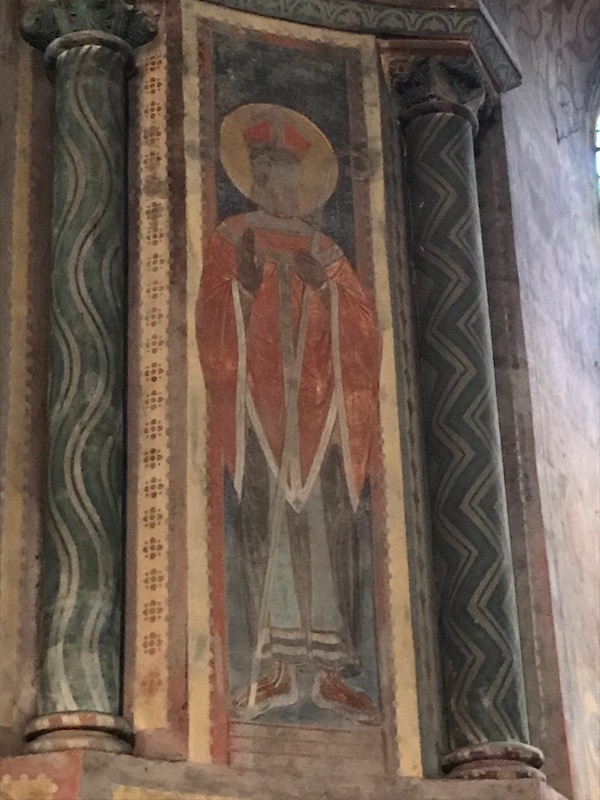
The choir, however, still contains traces of the painted decoration from the Romanesque period. While they have deteriorated, if you look really close you can see the Virgin with Child, Christ, and twelve seated Apostles. After the close-up picture, I put a drawing the explains the parts: (4) is Christ in the center of the composition with (6) the eagle representing Saint Jean in the upper-right and (7) the bull of Saint Luke in the lower-right.
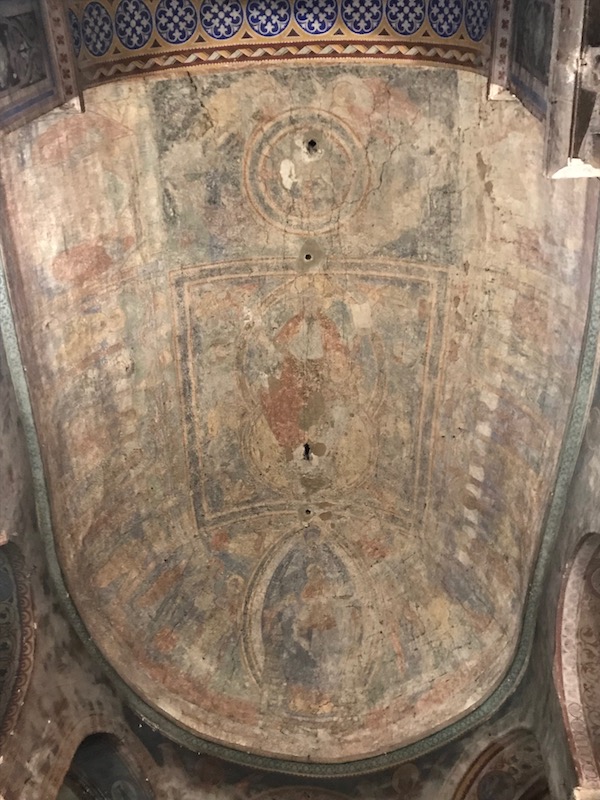
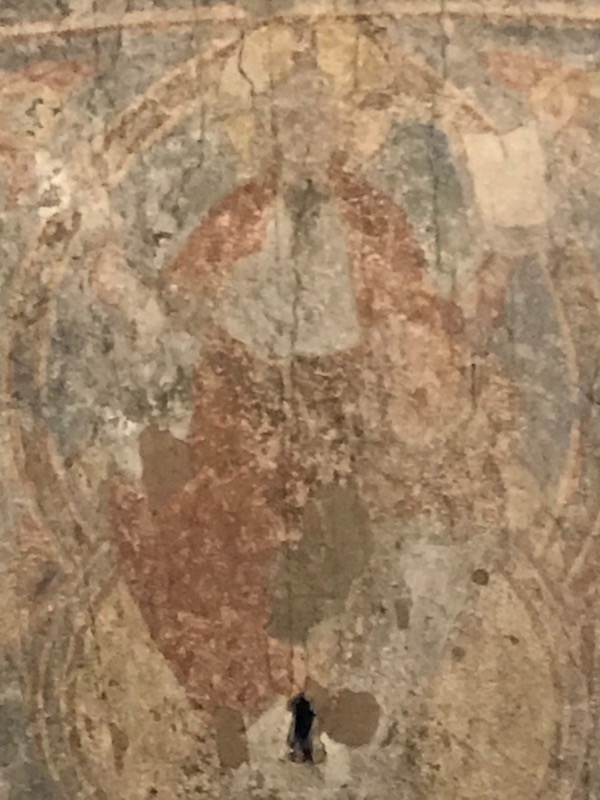

The Chapel of Sainte-Anne, is a bit different in that it was built in Flamboyant Gothic style in 1745. It has a lovely altar as well as a wall niche containing a tomb.
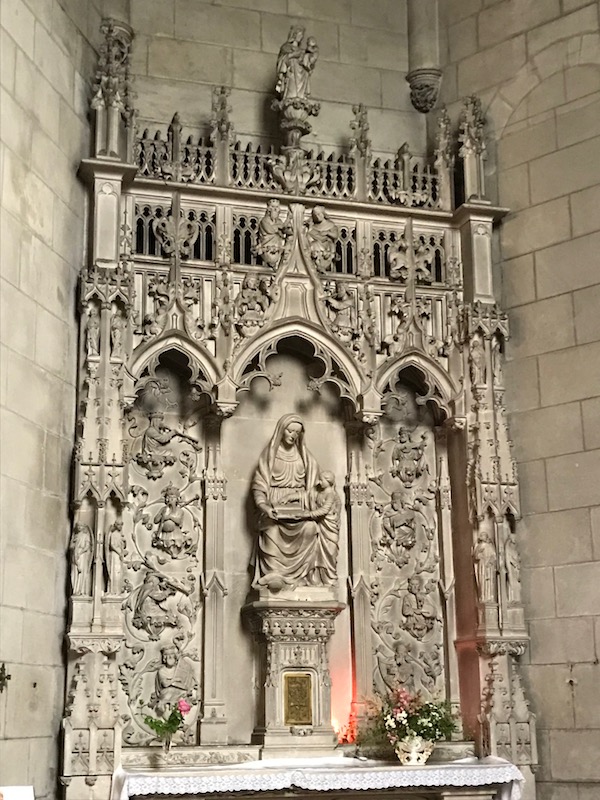
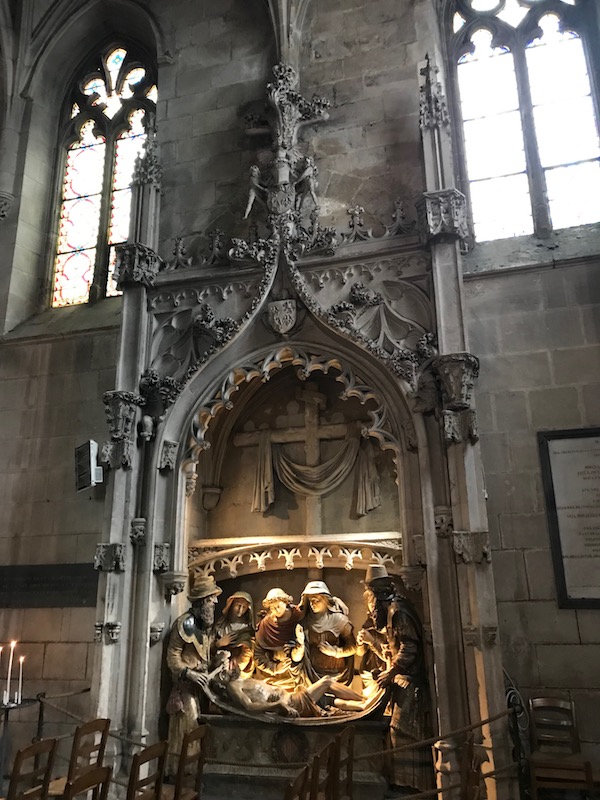
A couple interesting stained-glass windows, mostly from around 1875 or so.
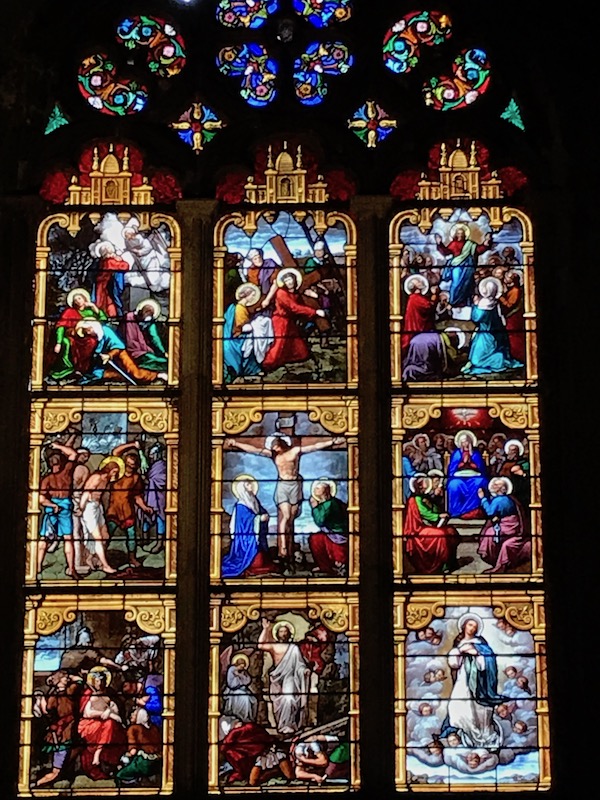
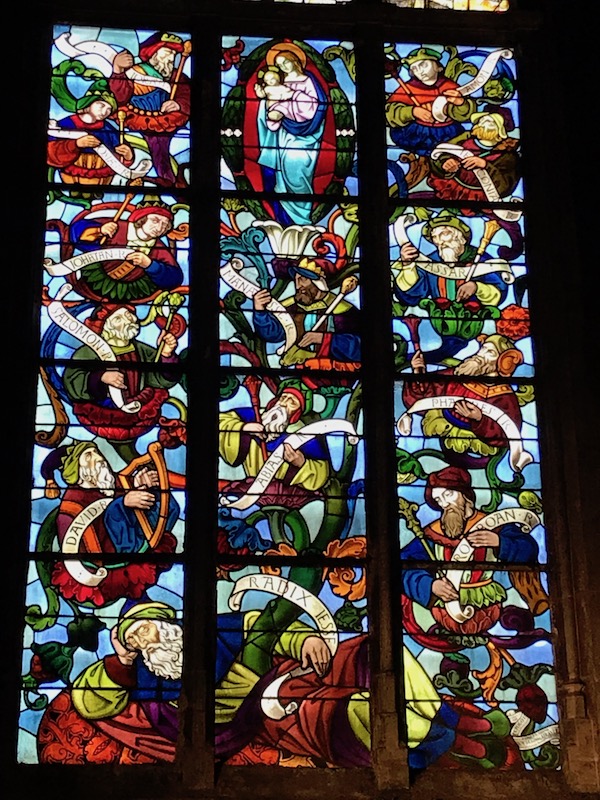
There are also a few interesting "Hôtel Particuliers", which were private mansions. The Hôtel Fumé was built in the end of the 15th century for a rich family of magistrates. There are two buildings separated by a courtyard. It is part of the University now, so we could only admire the street façade, with all of the characteristic elements of Flamboyant Gothic: mullioned windows, pinnacles, patterns of kale and leaves, and carved figures.
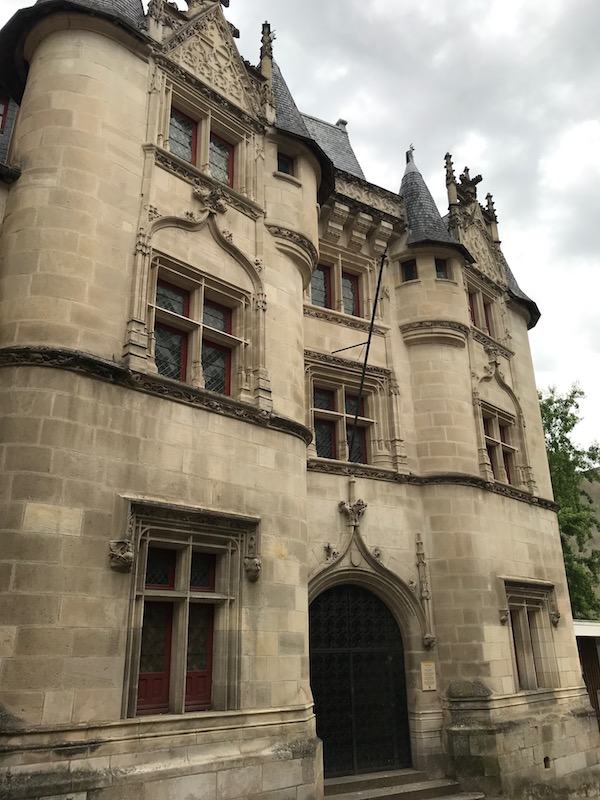
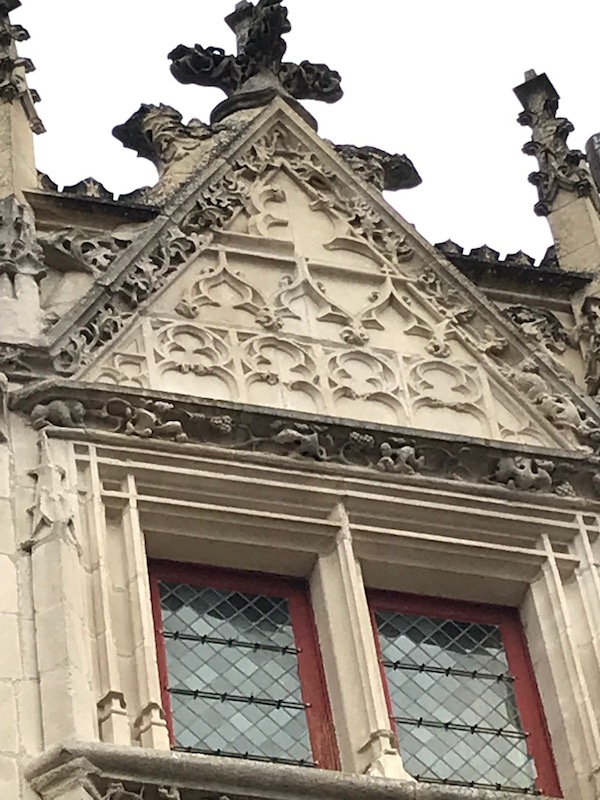
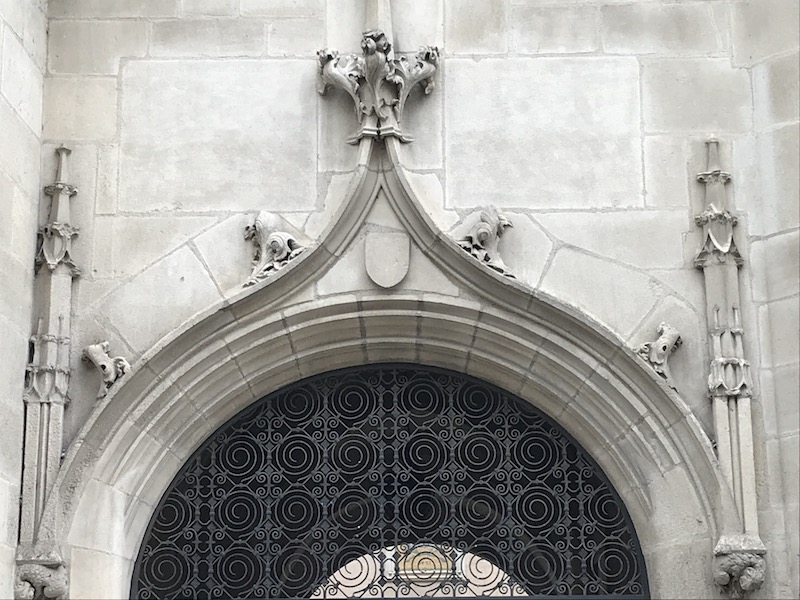
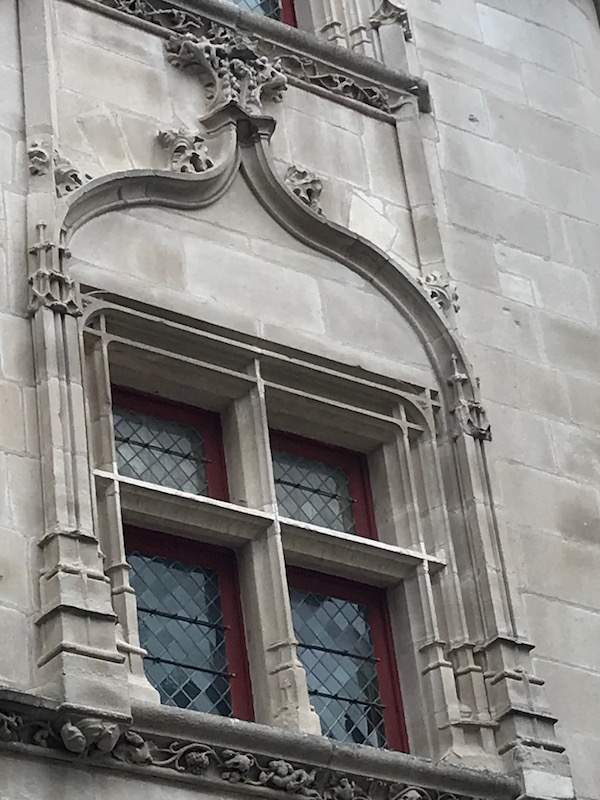
The Hôtel Pinet dates from the 17th century and has a classic and elegant façade. Today, it is the home of the President of the University and there was something going on there (hence we just peeked in to the courtyard to take a couple quick pictures).
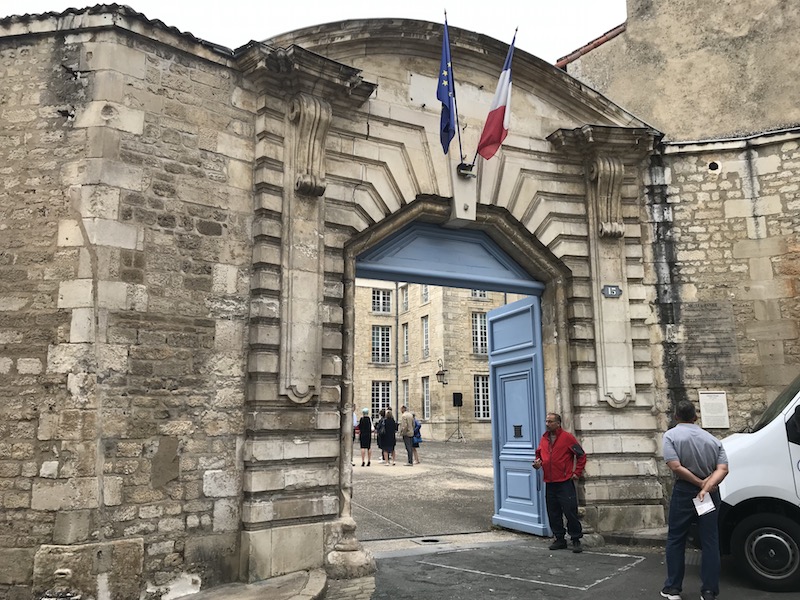

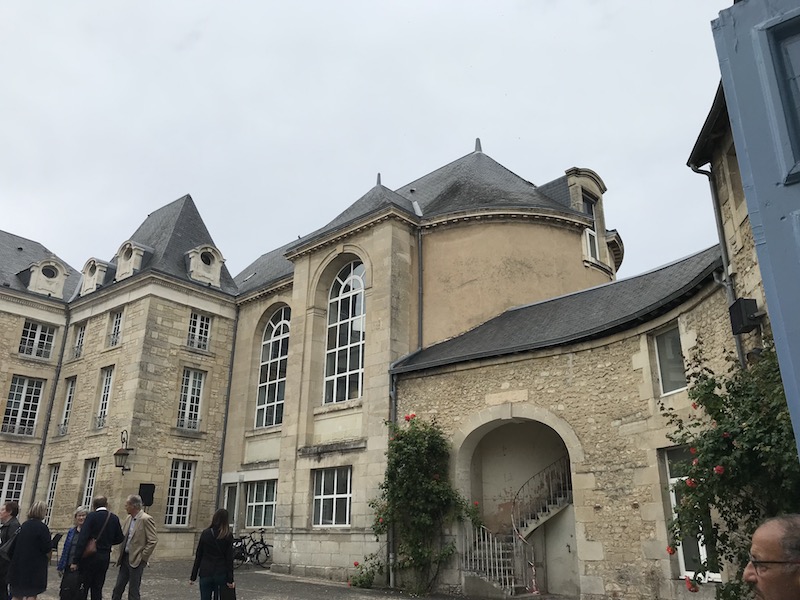
The Maison des Trois Clous (House of the 3 nails) dates from the 15th century. It has a really nice sculpted mullion window and a few gargoyles at the top. It is almost impossible to see, but above the tiny window at the top are 3 iron "nails" that stick out, which gives the house its name.

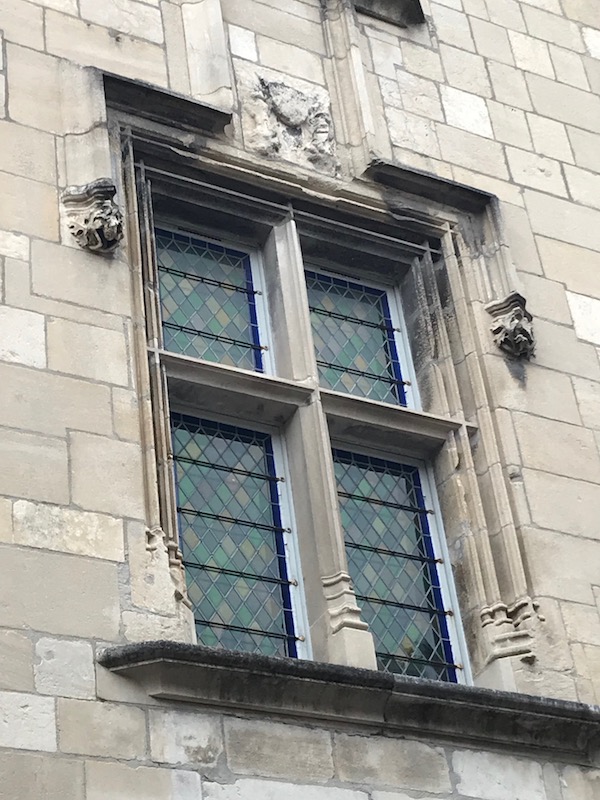
This is the Cordier tower, a 14th century tower that was part of a castle (the castle was destroyed in 1588). Also called Porte de Paris, it now sits alone in the middle of a roundabout. One one side you can see traces of where the curtain wall would have connected the tower to the other ramparts.

Church of Saint-Jean de Montierneuf, built as part of an abbey in the 11th century, is notable for its Romanesque architecture. This façade is very plain, a simple wall of rubble pierced with Corinthian columns and pediment in the classic style, with baroque ornaments. This was done in 1644 when the western side was removed and rebuilt.




In this part of the church, you can see columns with sculpted capitols that date from the 11th century (around 1070).


The Baptistère Saint-Jean is the oldest Christian monument in France. It was built as a baptistery in the early 4th century on Roman foundations and extended in the 7th century. In the middle is the octagonal baptismal pool with 2 steps leading down. At that time, it was adults who were baptized and they would walk down into the pool. Eventually, this type of pool was phased out and the baptismal fonts that you see in churches replaced them, as infants started being baptized. The is also a small museum which includes stone sarcophagi dating from the 5th to 7th centuries, and other stone remnants such as pieces of Roman columns.



It contains frescoes from the 11th to the 13th centuries which include representations of Christ's ascension, symbolic peacocks, and the struggle between good and evil. This first set is the ascension ... you can see Christ at the top, then below it (2nd picture) is the hand of God pointing up to Christ, and then the 12 apostles (6 on each side) watching him ascend.




This fresco shows Christ in the quatrefoil encircled by symbols of the 4 authors of the gospel (eagle of Saint John, angel of Saint Matthew, bull of Saint Luke and lion of Saint Mark).

We only got to see the outside of the Hôtel de Ville. It was built between 1869 and 1875 and was the culmination of a huge planning project in the town center that started with the arrival of the train in 1851. It has a majestic neo-Renaissance façade.

Following a fire in 1018, the Romanesque Cathédrale St-Pierre was built in 1025. It then was rebuilt in the 12th century and then major restoration works began in the 19th century to fix damage done at the hands of the Protestants in 1562 during the Wars of Religion. This main façade is an example of French Gothic style and has 2 large towers with 3 doors between them, all of them with lots of sculptures above. The large rose window was renovated in the 19th century although the church still has some admirable stained glass from the 12th and 13th centuries.
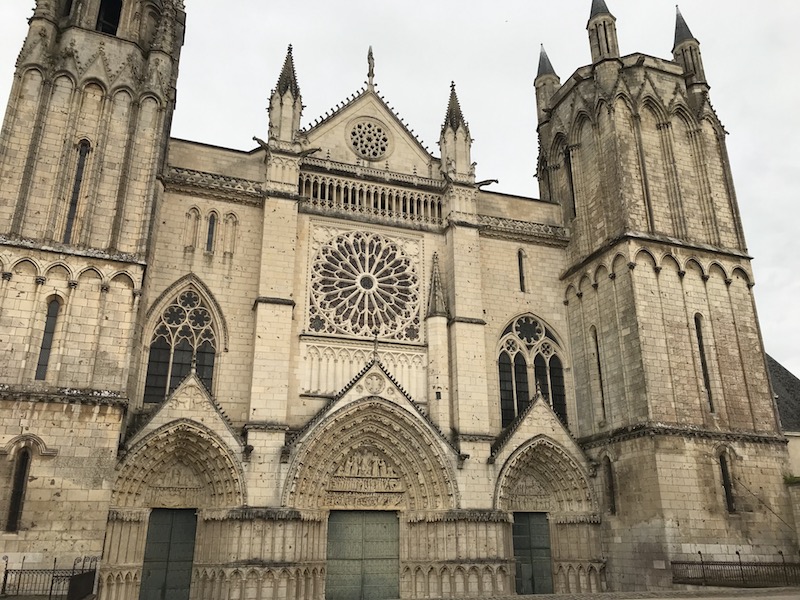
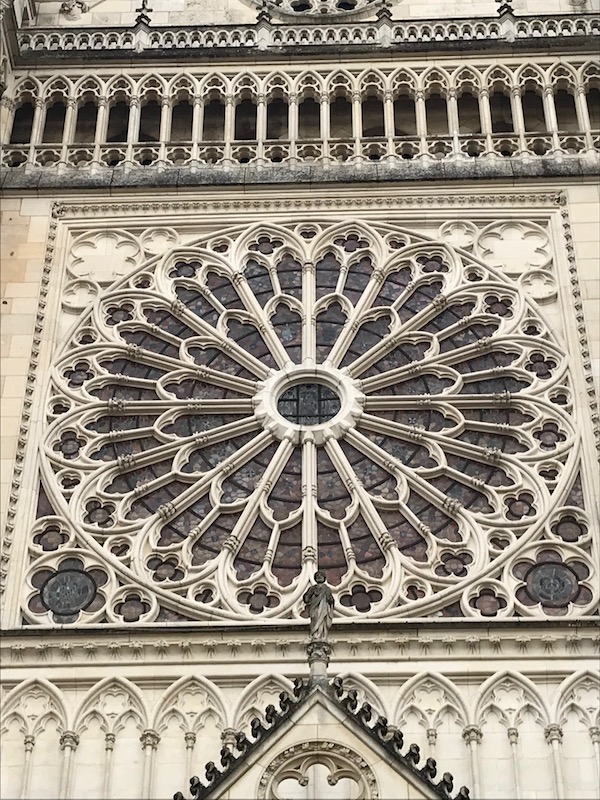
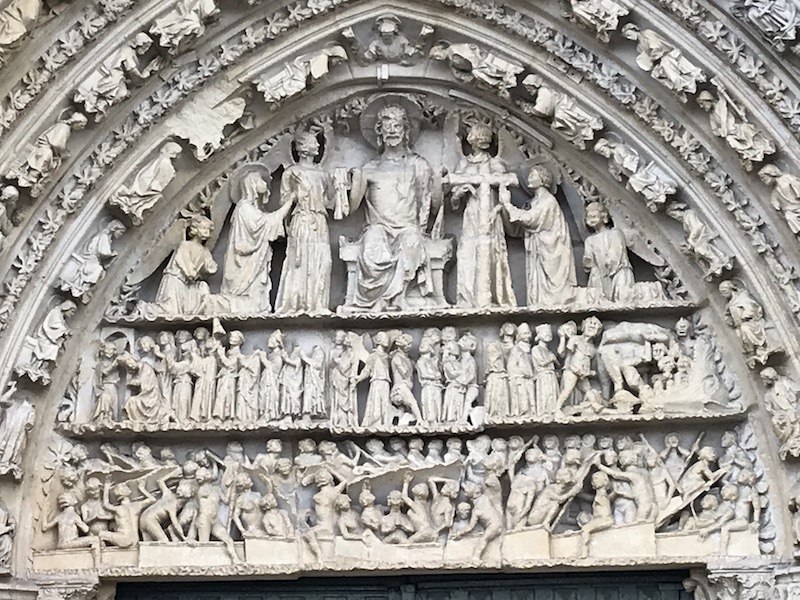
The interior is known for its simplicity, but you can clearly see the Gothic style in the very high nave with ribbed vaults. Mural paintings in the vaults of the nave show scenes from the Old and New testaments, with alternating backgrounds in dark blue and deep red. These 4 scenes are: The Bosom of Abraham, Christ the Judge, The Coronation of the Virgin, and Angels holding crowns.

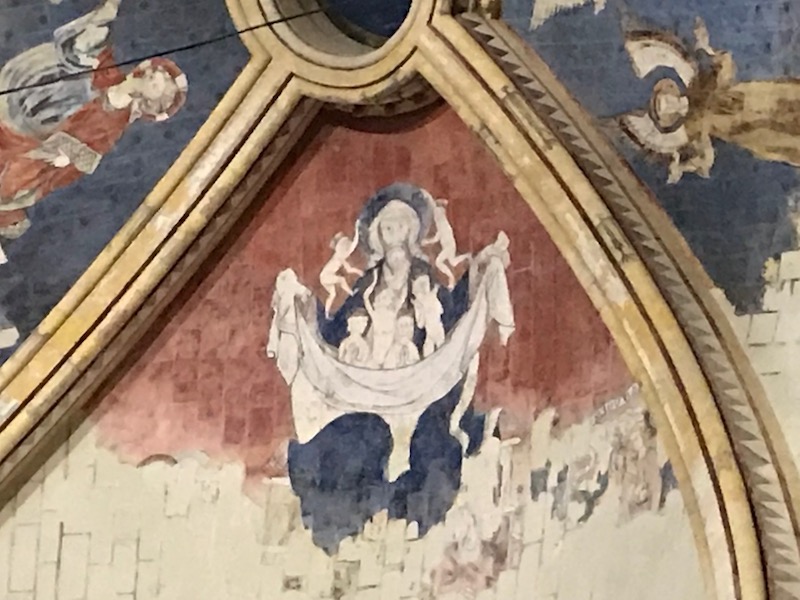
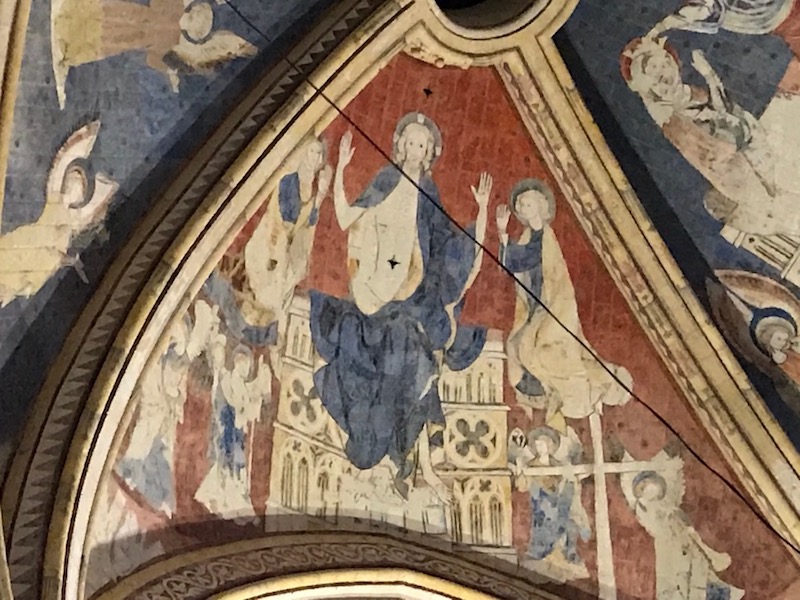
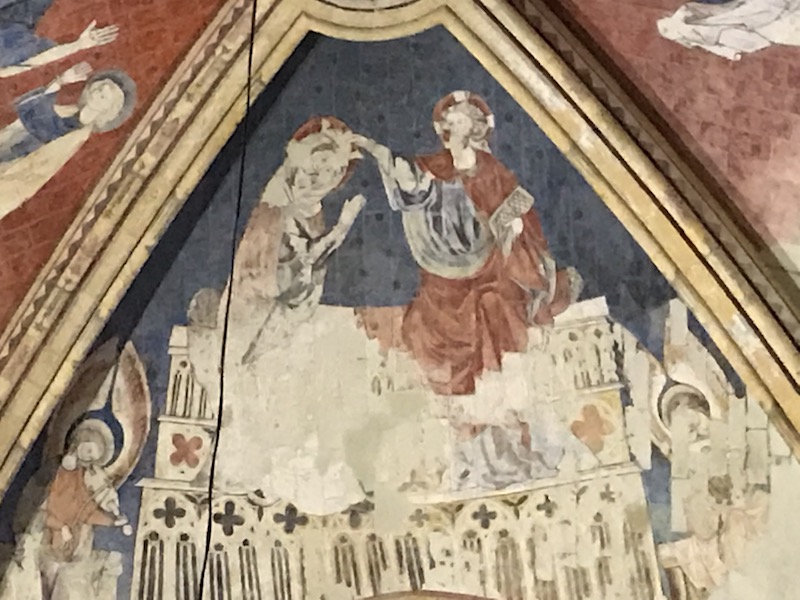
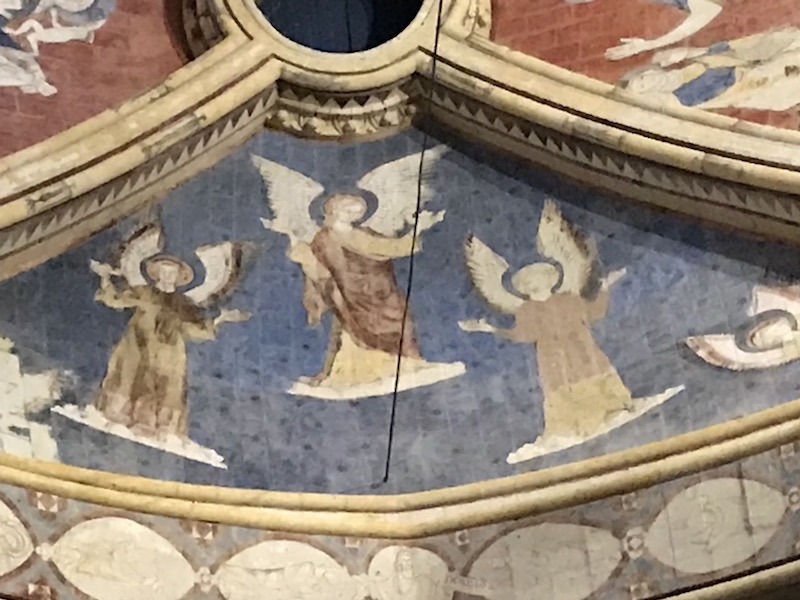
This is one of the famous stained-glass windows in the cathedral, and it depicts the Crucifixion. Dating from about 1160, making it one of the oldest in France that is preserved in its original state. It was donated to the cathedral by Eleanor of Aquitaine and King Henry II.

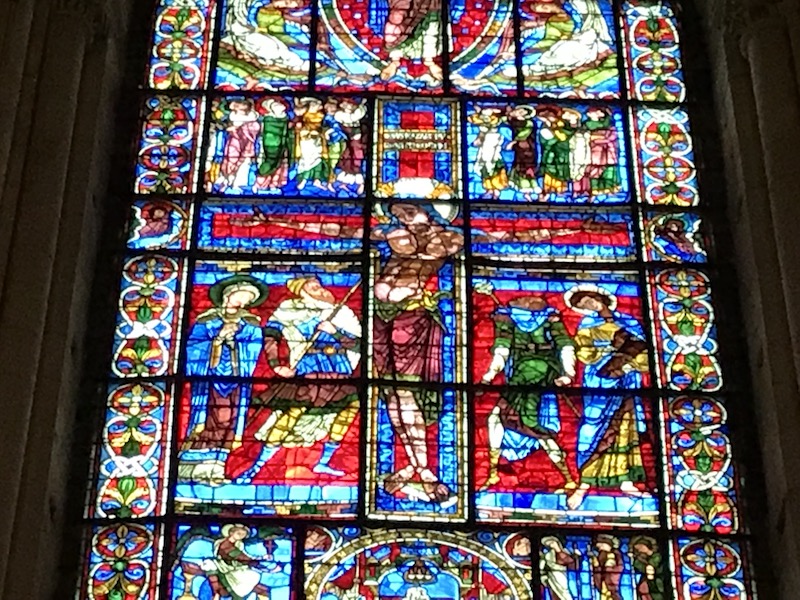
I liked this statue, which is from the 17th century, which shows Mary crushing a serpent beneath her right foot while holding her child as far away as possible.

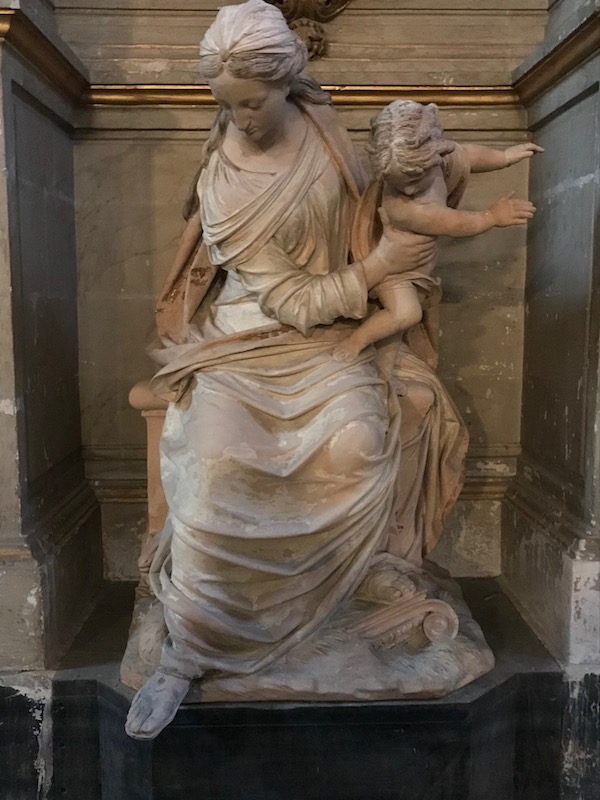
Several of the paintings are like this one.... dating from 1670, it was "whitewashed" during the Revolution and then the whitewash was removed, revealing it again, in 1847.

Eglise St Hilaire le Grand, or the Church of Saint Hilary the Great, was consecrated in 1049 and is on the site that is supposedly the tomb of Saint Hilary. I had never heard of Saint Hilary before, but he was born in Poitiers around 315 and was the first known bishop of Poitiers. The design is quite unique, as it looks like a Paleo-christian basilica even though it actually has the form of a Latin cross.



Inside, it is very Romanesque with the very round arches and no flying buttresses. You can see the remnants of painted decor from the 11th century, which when built would have entirely covered the interior. There are quite a few of the 11th century frescoes visible, but I tried to pick out the most impressive.





Only 2 pictures with the stained glass ... one of the reasons why I absolutely LOVE stained-glass windows is seeing the colors that get projected on the walls with the sun.

